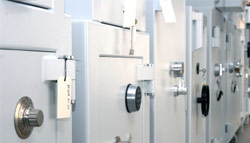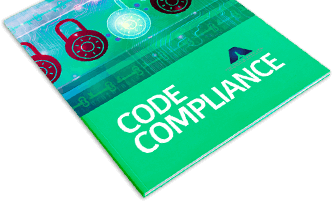Keep Your Business Assets Protected with the Right Commercial Safe
When installing a commercial safe to keep your business assets protected, it is important to select one that is up to the task. Choosing a safe that is not built to the standards that your company requires could leave its assets dangerously unprotected.
Types of Commercial Safes
 Broadly speaking, there are three types of commercial safes. Which type is most suited for your business will depend on what dangers you want to guard against.
Broadly speaking, there are three types of commercial safes. Which type is most suited for your business will depend on what dangers you want to guard against.
- Fire-resistant safes protect papers, cash, film and electronics from heat
- Theft-deterrent safes guard cash and valuables from burglars
- Composite safes are built to withstand both fire and theft
Commercial Safe Ratings
Commercial safes are rated by Underwriters Laboratories (UL). The safes are rated both on their ability to resist heat during a fire and to withstand a burglary attempt. When comparing safes, these ratings will give you objective data to determine how well made they are.
Fire Safe Ratings
At UL, fire safes are rated using three different temperatures and five different times. The ratings show how long it will take for a safe to reach the given temperature if there is a fire. They’re broken out into classes:
- Class 350 safes will keep the interior temperature below 350 degrees Fahrenheit
- Class 150 safes will maintain a temperature under 150 degrees Fahrenheit
- Class 125 safes keep their belongings at 125 degrees Fahrenheit or less
Class 350 safes are generally used to protect paper documents and cash. Class 150 safes are primarily built for film and magnetic tape. Class 125 safes, the coolest of all three classes, will keep hard drives and other electronics safe
Theft Safe Ratings
When measuring how well a safe stands up to theft, UL turns to their best safe crackers. These crackers are paid to break into safes, and they are among the best in the world.
To measure the physical strength of safes, UL times how long it takes to break into the safe with a hand tool and torch. These ratings are expressed in the safe’s model number. For instance, a TRTL-15×6 safe withstood attacks for 15 minutes, and a TRTL 15×30 safe held up against UL’s employed burglars for half an hour. The latter would provide excellent protection against a normal thief, who is probably not as skilled as the professionals at UL.
Lock Ratings
 Locks are given a separate rating, and different scales are used for electronic and combination locks.
Locks are given a separate rating, and different scales are used for electronic and combination locks.
Electronic locks are either Type II or Type IF. Type II will withstand advanced attempts to break into the lock and is suitable for most small businesses. Type IF is the highest possible rating and complies with FF-L-2470 Federal Standards.
Commercial locks are categorized into four groups:
- Group 2 will resist semi-skilled manipulation
- Group 2M will resist skilled manipulation
- Group 1 will resist 20 hours of expert manipulation
- Group 1R will resist expert manipulation and radiological attempts
Together, all of these ratings give you unbiased, objective numbers to determine how well made a safe is. For help determining which ratings are appropriate for your business needs, contact us at a Aim Lock and Safe. One of our professionals will be happy to go over all the ratings with you and give you a quote for one of our commercial safes.






